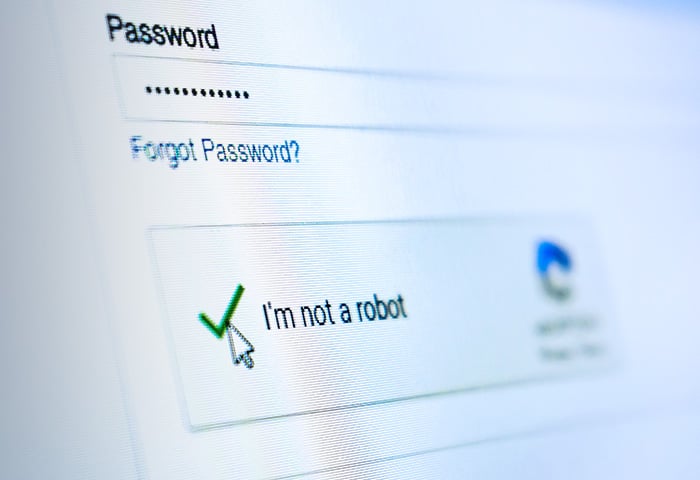What is a digital footprint?
The definition of a digital footprint is the trail of data a person generates, both actively and passively, when using the internet. When you’re online — using your device to interact with websites, apps, forums, and files — you leave traces of data behind. These data traces make up your digital footprint.
As the basis of your digital identity, your digital footprint can be used to track your online activity and details about the electronic devices you use. But a digital footprint really has meaning when viewed as a whole, as it’s the larger collection of personal data. A single crumb (or data point) won’t reveal much; but altogether these crumbs can tell a detailed story, including the websites you visit, the searches you make, the texts you send, and the photos and files you upload and download.
A digital footprint is what online tracking software uses to follow you around online, and it forms the basis of your digital identity. If you use the internet, you can't help but leave a digital footprint — your digital footprint is leaving its mark this very second.
Take reading this article as an example. How did you discover this page? Did you Google something like "what is digital footprint" and land here? If so, you left a digital print on your search history. Then you left another digital print about your web browsing history when you landed on this website. Are you going to share this article on social media later? You see where this is going.
 Your digital footprint can reveal a lot of information about you.
Your digital footprint can reveal a lot of information about you.
Examples of a digital footprint
Like a real footprint, how long the mark lasts depends on the surface you step on. A footprint on concrete (photos or videos uploaded online) lasts a lot longer than a footprint on sand (your search or browser history). Clearing your browsing and search history is pretty simple. Getting content forcibly removed from the internet is much more difficult.
Digital footprint examples include:
-
Search history
-
Browsing history
-
Text messages
-
Creating online accounts
-
Photos and videos uploaded online
-
Using digital fitness trackers
-
Content liked and posted on social media
-
Subscribing to blogs or newsletters
-
Comments or reviews left online
-
Buying and selling online stocks
-
E-commerce purchases and activity
-
Signing up for apps (e.g., shopping, dating, and health apps)
-
Photos where users are tagged
Examples of data that go toward digital footprints can also extend to deleted content. Just because it's gone from one place, or the original place, doesn't mean it's been completely erased from existence. Data gets copied and shared for a number of reasons, making even deleted content part of your digital footprint.
And while there is mostly a dark side to digital footprints, there are some examples of positive applications. For instance, if you’ve built a good online reputation displaying your career achievements, this could help you win jobs in the future. It can also help you get noticed — where would online influencers be without a massive, engaging digital footprint? But what does a digital footprint mean for those of us who don’t want all that attention?
Let’s look at the different types of footprints first, the risks they pose, and then discuss how you can protect your digital footprint.
Types of digital footprints
There are two types of digital footprints: passive and active digital footprints, which differ by informed consent. The online data-sharing activities you do intentionally or with informed consent make up your active digital footprint. The definition of a passive digital footprint refers to the data collected when your online activities are tracked without your informed consent or knowledge.
Active digital footprint
An active digital footprint is content you generate and online activities you deliberately engage in. If you're an online over-sharer, you have a massive active digital footprint. If you keep online sharing to a minimum, you would mostly leave behind internet cookies and trails for ad tracking (passive), but you’ll still have an active footprint to some degree.
Data deliberately or knowingly shared by users is the crux of the active digital footprint definition — examples include:
Passive digital footprint
A passive digital footprint is all the information collected about you without your explicit knowledge or active involvement. This is considered passive because you are not aware that this information is being collected.
Some common sources where data is gathered stealthily include:
On their own, these are by no means as serious as a data breach, but together can be quite powerful. And while Facebook doesn’t listen to private conversations, it does use tracking pixels and collects behind-the-scenes data. So even if you’re cautious not to overshare on social media, your movements still give away your behavior as a consumer.
It’s important to note that the creation of a digital footprint, whether done actively or passively, is not the same as your data getting exposed in a Facebook leak.
 You have an active and a passive digital footprint.
You have an active and a passive digital footprint.
Why your digital footprint matters
Your digital footprint matters because it forms the basis of your online reputation, which is the way businesses, potential employers, government agencies, strangers, and acquaintances think about you.
It's not just advertisers who use your digital footprint to understand your preferences and target you. Have you had a job interview in the past decade? Got matched on a dating app? Had a heated conversation on social media or a public forum? Your digital footprint can be used to assess the type of person you are, for better or worse. Don't let your social media past ruin your future — delete any old posts you’re embarrassed about, so they’re not immediately visible.
Anonymous as it may feel, what you do online is being passively monitored and recorded. While your data hopefully won’t be used against you in an identity theft scam or sextortion plot, the dangers of a digital footprint can be very impactful if abused. One of the biggest dangers of a digital footprint being misused is getting doxxed.
Digital footprint and digital identity
Your digital footprint (breadcrumbs you leave) helps create your digital identity (the entire loaf of bread). Companies and other parties can collect, combine, and purchase breadcrumb data from digital footprints to create digital identities that represent buyer personas. These personas can then be aggregated and used for marketing.
A few digital crumbs from your browser history, e-commerce activity, and social media likes won't give enough to create a digital identity. But together, these data points may tell the story of a gaming enthusiast in their mid-20s who likes to make in-app purchases. Or a foodie who is pregnant and wants to buy new kitchen gear.
While the association with online tracking is negative, or neutral at best, there's one more example of a positive outcome. A digital identity lets you prove who you are (authentication). It is an extension of yourself that gives you access to the digital world. It's who you "are" online, your online self. That’s why you must safeguard it so that no one can use your digital identity or alter it.
How to protect your digital footprint
Manage and protect your digital footprint by following website safety habits practicing good digital hygiene. Start with these 10 ways to protect your digital footprint:
And while your home Wi-Fi connection is more secure than public Wi-Fi, you should use a VPN at home too, especially if you’re disclosing personal information or doing anything financially related. Securing and maintaining your home network connection is crucial, and you should also periodically scan your router for viruses.

Stop trackers with one powerful app
Now that you know how to protect yourself by managing your active digital footprint, learn how to hide your passive digital footprint. One of the best ways to keep your digital prints hidden is by using dedicated anti-tracking software.
Your digital footprint is a commodity, ready to be sold to the highest bidder. AVG AntiTrack helps you disguise your online identity, stop targeted ads, and prevent unfair price jacking. Try AVG AntiTrack for free today to help strengthen your online privacy, reduce your digital footprint, and protect your personal data.

 Your digital footprint can reveal a lot of information about you.
Your digital footprint can reveal a lot of information about you. You have an active and a passive digital footprint.
You have an active and a passive digital footprint.














